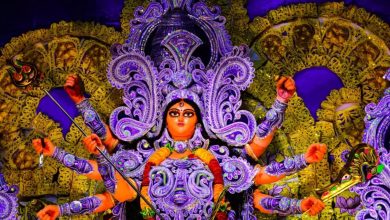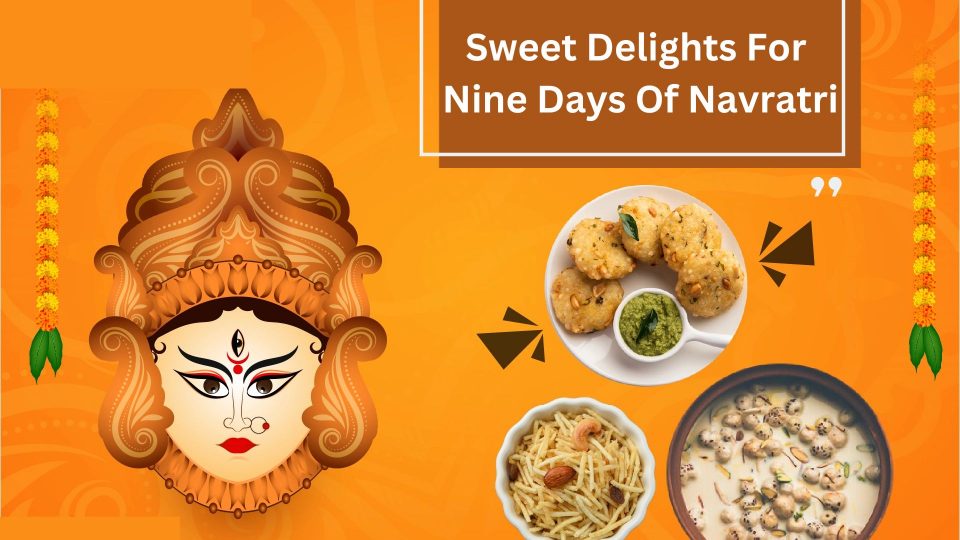Sanatan Dharma is the oldest known religious system of values, obligations, and responsibilities. It is meant to be followed by all living things. At least 7500 BC, its scriptures, known as “VEDAS,” are the world’s earliest written books.
The Rigveda uses the word “dharma” to refer to the universal path that created beings to follow. Many misfortunes and problems were believed to result from not choosing those pathways.
The term “dharma” refers to the moral, ethical, and religious paths humanity should follow to uphold their rights, obligations, virtues, and virtuous way of life and conduct. The Dharma is universal and it applies to everyone.
Religious sects emerged beginning around 1000 BC, including Judaism, Zoroastrianism, Jainism, Buddhism, Christianity, Islam, Sikhism, Swaminarayan, Arya Samaj, and Sai Baba, to mention a few, pushing Sanatan Dharma to the background.
According to Sanatan scriptures, “Vasudhaiva Kutumbakam” means “World is one Family”. The growth of Sanatan Dharma followers through conversions, invasions, wars, bloodshed, enchantment, compulsion, etc. has been hindered by this concept.
On the contrary, the attack of other religions on Sanatan Dharma followers has lasted over 3000 years. Sanatan Dharma’s followers migrated to the borders of India as a result.
Hindu Sanatan Dharma has demonstrated beyond a shadow of a doubt that they are prepared to live in harmony with followers of other religions. Hindus are regarded now because they are the world’s most tolerant people.
What Is Sanatana Dharma?
Let’s read about the meaning of Sanatana Dharma. Sanatan Dharma is known as ‘eternal wisdom’ in the Sanskrit language. It is also referred to as something age-old, ancient and never dies. The Sanatana Dharma meaning is also referred to as the ‘Heart Of Hinduism’.
Why is Hinduism Called Sanatana Dharma?
Sanatana dharma is a term in Hinduism that refers to the “eternal” or absolute set of responsibilities or religiously decided practices that all Hindus must follow, regardless of class, caste, or sect.
Sanatana Dharma Principles
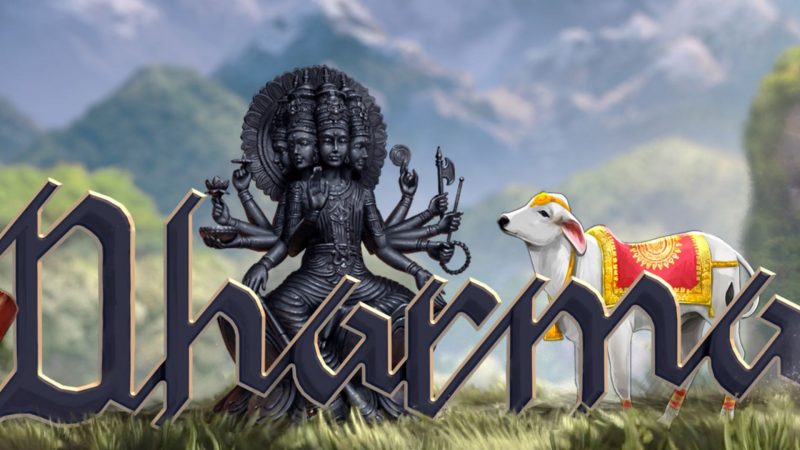
A. Truthfulness
Speaking the truth, defending the truth, and standing with the truth is vital.
B. Compassion
Since all living things are related by blood, one should treat them all with kindness. Sanatan Dharma Kendra originates from Lord Krishna, God, the most forgiving person. Being vegetarian and refraining from wearing leather are acts of kindness toward animals. Treat everyone with respect and equality, and keep their well-being in mind. Don’t use drugs, alcohol, or tobacco; don’t gamble; don’t engage in extramarital affairs; all of these things hurt families, particularly women and children. Therefore, one needs to refrain from these immoral practices.
C. Austerity
Reduce your ego, repeat Vedic mantras, live a modest life, abstain from materialism, eat quickly and simply, don’t make demands on people, and undertake journeys to spiritual places.
D. Cleanliness
Take a bath or shower at least once a day, brush your teeth at least twice a day, and maintain clean streets, public spaces, businesses, and rivers by cleaning them frequently and not tossing garbage outside.
E. Charity
Contributions should be made regularly to the impoverished, to God’s servants, to responsible and deserving temples, and to individuals working in God’s service.
F. Spiritual Education
With over one million verses, the Vedic knowledge is timeless and extensive, having been assembled by God in human form. They teach information on every aspect of life as well as divine science. The foundation of all Vedic knowledge, the Srimad Bhagavad-Gita, is the Word of God manifest in human form. The Srimad Bhagavatam describes the exploits of God and human history from the time of creation, which is estimated to be 155.522 trillion years ago. The descriptions of God’s activities are found only in the Vedic literature. These two texts should be regularly studied by everyone, but especially by young people.
Teachings Of Sanatan Dharma
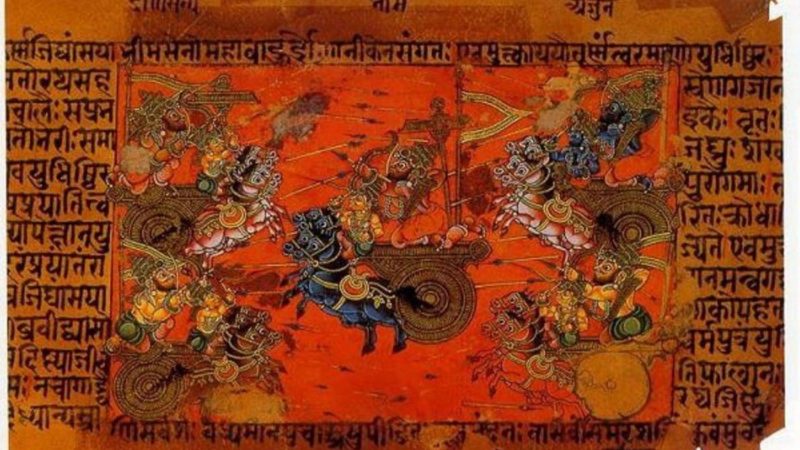
- No soul gets sentenced to an eternity of damnation. Every soul eventually returns to god’s realm because god is the most kind, forgiving, and caring being.
- We have always existed and are everlasting (reincarnation). We were here before this body, we are here now, and we shall be hereafter this body.
- The one true, visible, and verifiable god who has manifested himself in millions of forms and names.
- A vast library of eternal wisdom composed by god in human form, including over a million poems.
- The unbreakable law of karma, which delivers justice to all living things. We are accountable for the things that we do. we either benefit or suffer from our deeds.
- All living things are brothers and sisters; this is the idea of universal brotherhood.
- Individual worship combined with personal service to god.
- God makes appearances to carry out his transcendental pleasures in this and other realms. we seem to be able to see him, play with him, and enjoy ourselves with him.
- Material formation follows a cycle. There are repeated cycles of creation and destruction, lasting 311.040 trillion years apiece. There is also no plundering, circumcision, slavery, taking of women and children as prisoners during or after conflict, stoning, cursing, or looting.
- The bhagavad-gita makes no mention of any of these wicked deeds.
Sanatan Dharma Rules

Hindu Sanatan Dharma is known as the “way of life,” there are several guidelines that must be followed to live a responsible and calm life:
- This Dharma has five primary traits that must be respected: Arjava (straightforwardness), Dana (charity), Satya-Vacana (truthfulness), Ahimsa (non-injury to living creatures), and Tapas (asceticism).
- The Brihadaranyaka Upanishad emphasizes the three cardinal qualities of charity, control, and daya (compassion for living things) as the additional attributes of the Sanatan Dharma.
- According to the Kathopanishad, a follower of Hindu Sanatan Dharma must stay away from unlawful conduct and recognize that calm and focus are necessary qualities of a seeker of the Divine Self.
Rituals And Relevance Of Sanatan Dharma
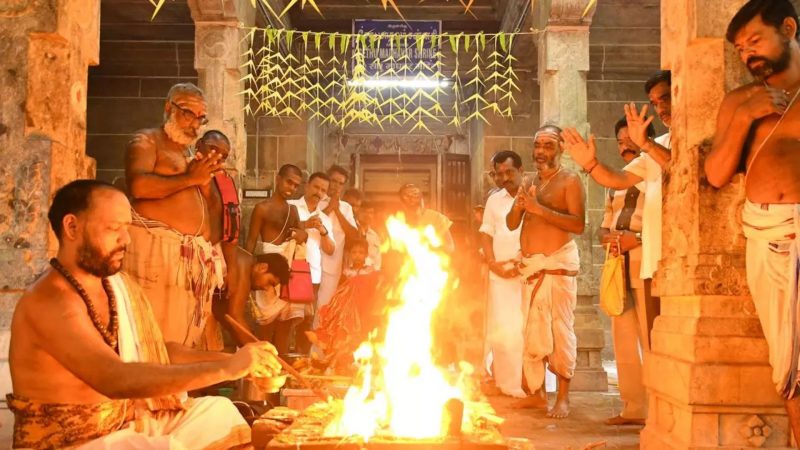
- Namaskar: Sanatan Dharma has raised the scientific marvel of Namakar to the role of religious practice. When we practice Namaskar, or joining hands, our fingertips come into contact. The scientific explanation for this is that by applying pressure to the fingertips’ pressure points linked to the brain, eyes, and ears, we can ensure that we will remember the person for an extended time.
- Lighting Diya: When a Diya is lit, it is believed to be lucky for all occasions. We worshipped with Diya lighted at temples or at home. Science says that using cotton thread and Ghee/Oil kills nearby microbes and brings positive energy into the house.
- Use of Turmeric in Puja: Turmeric has several health advantages, including anti-inflammatory, antibacterial, and antioxidant characteristics. It eliminates infections, strengthens the immune system, and expedites the healing of wounds.
- Reciting Mantras: When properly spoken, Vedic mantras have a unique frequency vibration. Mantras are believed to help alleviate a range of physical issues in humans as well as enhance attentiveness.
- Applying Tilak: It is traditional for Hindus to apply Tilak on their foreheads. To maintain mental peace, the tilak is positioned directly in front of the pituitary gland.
- Blowing Conch: The conch is a known instrument to almost all Hindus. As part of the ritual, conch noises are often made during Puja. Sound waves from a conch may destroy germs and infections. Additionally, it gets rid of all the bad energy in the space.
- Chanting Om: Om is the universe’s power plant and the source of all truth. We recite OM because we think it’s holy and pure. Chanting OM regularly helps with thyroid problems, decreases heart rate, and increases mental clarity and alertness.
- Eating With Your Hands Rather Than A Spoon: Eating with your hands activates your salivary glands, which helps with digestion and maintains a healthier stomach.
Sanatan Dharma: A Perspective From The Bhagavad Gita
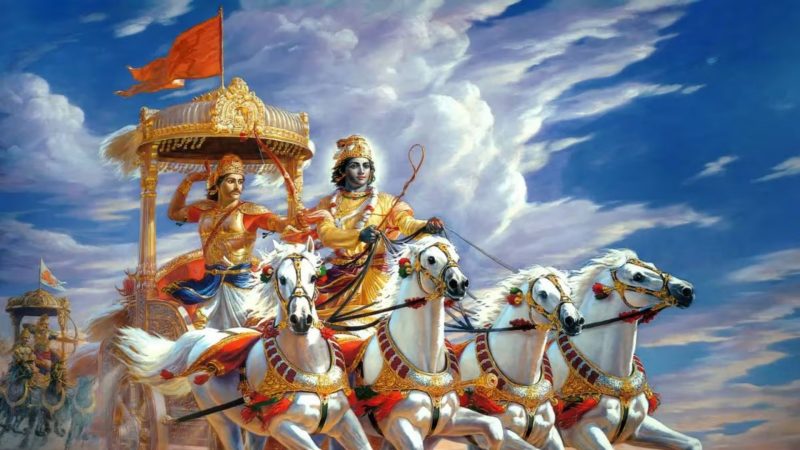
Yadaa yadaa hi dharmasya glaanir bhavati bhaarata; Abhyutthaanam adharmasya tadaatmaanam srijaamyaham
(The Gita, Chapter 4, Verse 7)
Meaning: Lord Krishna promises that God will eventually show up to rescue the world if righteousness (Dharma) starts to decline.
Santushtah satatam yogee yataatmaa dridhanishchayah; Mayyarpitamanobuddhiryo madbhaktah sa me priyah
(The Gita Chapter 12, Verse 14)
Meaning: “He who devotes his mental and intellectual endeavours to my path, and who is consistently content, devoted, self-controlled, steady, and firmly committed to righteousness, is dear to me,” says Lord Krishna.
Adweshtaa sarvabhootaanaam maitrah karuna eva cha; Nirmamo nirahankaarah samaduhkhasukhah kshamee
(Bhagavad Gita Chapter 12 , Verse 13)
Meaning: The person who has no hatred against anybody, is kind, understanding, and forgiving toward all others, is devoid of attachment and egotism, and finds a balance between pleasure and suffering.
Ahimsaa satyamakrodhas tyaagah shaantirapaishunam; Dayaa bhooteshvaloluptwam maardavam hreerachaapalam
(Bhagavad Gita Chapter 16, Verse 2)
Meaning: A person is superior if they possess the following traits: non-violence, truthfulness, peacefulness, compassion, renunciation, gentleness, modesty, and the lack of greed, cleverness, fickleness, or anger.
Tejah kshamaa dhritih shauchamadroho naatimaanitaa; Bhavanti sampadam daiveem abhijaatasya bhaarata
(Bhagavad Gita Chapter 16, Verse 3)
Meaning: A person who upholds Dharma rightly possesses spiritual energy, forgiveness, fortitude, purity, and the absence of jealousy or arrogance and pride.

